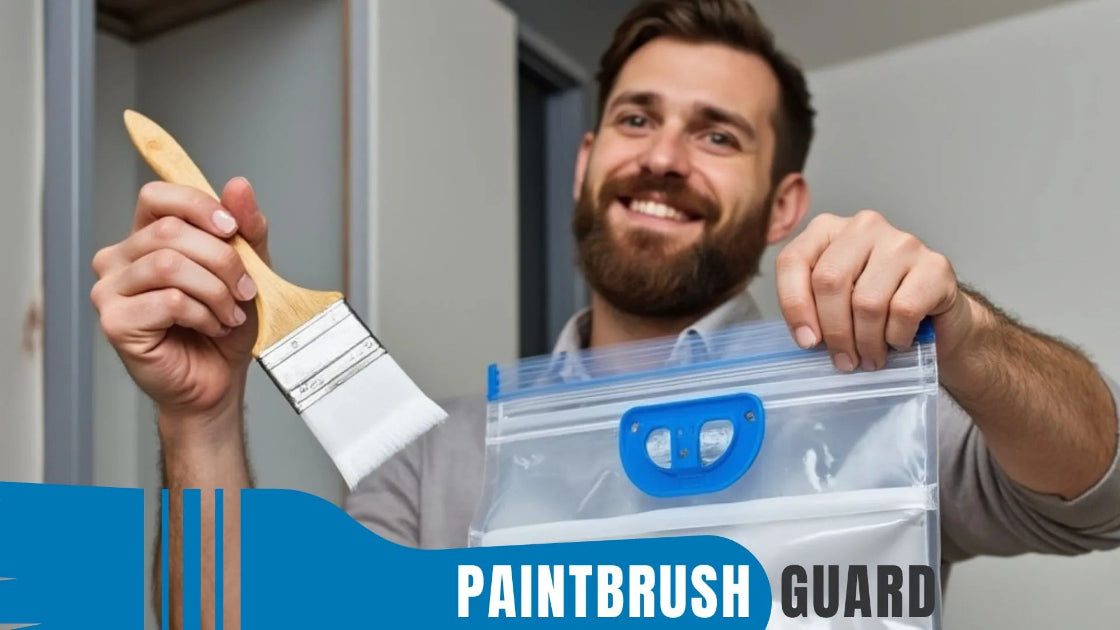
Is It Okay to Rinse Paint Brushes in the Sink?
|
Time to read 6 min
|
Time to read 6 min
Rinsing paint brushes in the sink is generally okay for water-based paints if you take precautions, but it’s not ideal for oil-based paints due to environmental and plumbing concerns.
Learn more about Paintbrush Guard: This guide tackles the top 20 questions about storing paintbrushes, from quick breaks to long-term care, and even challenges like humid coastal areas.
For water-based paints like latex or acrylic, rinsing brushes in the sink is usually fine. Start by wiping excess paint onto a rag to minimize what goes down the drain.
Then, rinse the brush under warm water, using your fingers to work out the paint, and add a bit of mild dish soap to remove stubborn residue. Rinse until the water runs clear, which takes about 5–10 minutes.
This method is convenient, but you should use a sink strainer to catch paint particles and avoid clogging your pipes.
A 2023 EPA report noted that small amounts of water-based paint are safe for most municipal water systems, but local regulations may vary.
With no cleanup required after a painting session, you can take a short break mid-project or wrap up your painting for the day, your brush stays ready without the need to clean.
Even with water-based paints, rinsing in the sink requires care to protect your plumbing. Paint residue can build up in pipes over time, potentially causing clogs, especially in older systems.
To minimize this, always wipe off as much paint as possible before rinsing, and use a sink strainer to trap particles. Run hot water for a minute after rinsing to flush the drain.
If you’re cleaning multiple brushes, consider rinsing them in a bucket of water first, then dispose of the dirty water responsibly, some areas allow it in the sanitary sewer, but check local guidelines to avoid fines or pipe damage.
Click on this link to find house painting guides and innovative tools to help you with your home improvement painting project.
Rinsing brushes used with oil-based paints in the sink is not recommended due to environmental and plumbing risks.
Oil-based paints require solvents like mineral spirits or paint thinner to clean, and these chemicals can harm aquatic life if they enter the water system.
They can also damage pipes or septic systems, as solvents don’t break down like water-based paints.
Instead, clean oil-based brushes in a container with solvent, wiping off excess with a rag, then wash with soap and water in a designated area.
Dispose of the solvent at a hazardous waste facility to comply with environmental regulations.
Even with water-based paints, rinsing in the sink can raise environmental concerns if done carelessly. Paint contains chemicals like pigments or additives that may harm waterways if not filtered properly.
A 2024 study by the Environmental Protection Agency found that improper disposal of paint waste contributes to 5% of micro-pollutants in urban water systems.
To minimize impact, use minimal water, capture paint particles with a strainer, and check local regulations, some areas prohibit any paint disposal in sinks, requiring you to use a bucket and dispose of the water at a designated facility.
To avoid sink rinsing altogether, consider alternatives that are safer for your plumbing and the environment.
For water-based paints, clean brushes in a bucket of warm, soapy water, then dispose of the water in a sanitary sewer or at a waste facility if required.
For oil-based paints, use a container with solvent, then recycle the solvent at a hazardous waste site.
Paintbrush Guard offers a no-rinse solution by vacuum-sealing brushes, keeping them wet for days and saving 15–30 minutes per session.
This tool eliminates the need to rinse, protecting both your sink and the environment while simplifying cleanup.
If you are planning to paint your house interior, in this article you will learn easy steps to make your home interior feel new again with step-by-step guides for all interior surfaces.
If you must rinse in the sink, follow best practices to reduce risks. Always use a strainer to catch paint particles, and clean it out after each use.
Wipe off excess paint before rinsing to minimize what goes down the drain. Use warm, not hot, water to avoid damaging bristles, and add a bit of dish soap to break down paint residue.
After rinsing, run hot water to flush the drain, and check your local waste disposal rules to ensure compliance.
For frequent painters, investing in a utility sink dedicated to cleaning can further protect your main plumbing system.
Read our exterior house painting guide: This mega guide gives you clear tips, tools and methods on how to paint all exterior surfaces on your home.
Rinsing paint brushes in the sink is okay for water-based paints if you take precautions like using a strainer and following local regulations, but it’s not suitable for oil-based paints due to environmental and plumbing risks.
Alternatives like bucket cleaning or the Paintbrush Guard, which skips rinsing entirely, offer safer and more eco-friendly options.
By adopting these methods and best practices, you can clean your brushes effectively while protecting your plumbing and minimizing environmental impact.
Yes, rinsing brushes used with water-based paints like latex or acrylic in the sink is generally safe if you wipe off excess paint first and use a sink strainer to catch particles. Rinse with warm water and mild dish soap until the water runs clear, and run hot water afterward to flush the drain, minimizing plumbing risks.
Rinsing brushes used with oil-based paints in the sink is not recommended because the required solvents, like mineral spirits or paint thinner, can harm aquatic life and damage pipes or septic systems. Instead, clean these brushes in a container with solvent, wipe off excess paint, and dispose of the solvent at a hazardous waste facility.
To protect your plumbing, always wipe excess paint off the brush before rinsing. Use a sink strainer to trap paint particles, rinse with warm water and dish soap, and flush the drain with hot water afterward. Check local regulations to ensure compliance, as some areas restrict paint disposal in sinks to prevent environmental harm.
Clean water-based paint brushes in a bucket of warm, soapy water, then dispose of the water in a sanitary sewer or at a waste facility per local guidelines. For oil-based paints, use a container with solvent and recycle it at a hazardous waste site. These methods reduce environmental impact and protect your plumbing.
Check your local waste disposal guidelines, as some areas prohibit rinsing paint in sinks due to chemical pollutants. Use a sink strainer to capture paint particles, dispose of water-based paint rinse water responsibly, and take oil-based paint solvents to a hazardous waste facility to avoid fines and ensure environmental safety.

Learn about eco-friendly painting, tips and tutorials on house interior and exterior surfaces, so you can get started with your project without any surprices during or after your painting.

Learn how interior house paint colors influence mood with expert tips on room preference so you can pick the best colors for a harmonious home environment.
We focus on the most popular shades for each interior colors, so you don't miss no matter what color you pick.

Learn how this innovative tool allows you to store paintbrushes without the need for immediate cleaning, offering significant advantages in time savings, water conservation, reduced chemical pollution, and lower costs for supplies.

